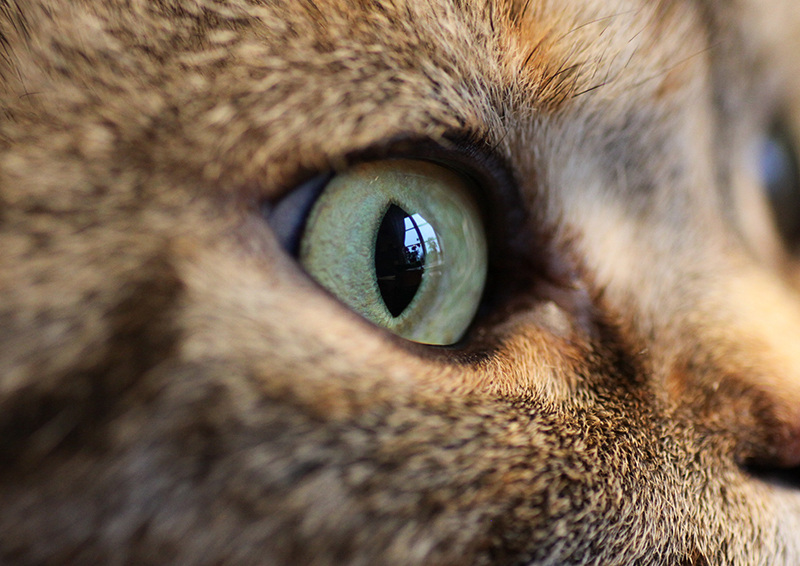Cat Eyes

Cats have keen vision; they can see much more detail than dogs. Concentrated in the centre of the retina of the eye, a specific type of cell called a cone gives cats excellent visual acuity and binocular vision. This allows them to judge speed and distance very well, an ability that helped them survive as hunters. However, although the cone cells are also responsible for colour vision, it is uncertain whether cats can see colours. Like dogs, cats also have a lot of the retinal cells called rods, which are good at collecting dim light. In fact, cats can see 6 times better in dim light than people, giving rise to the myth that cats can see in the dark. Cats also have a reflective layer called the tapetum lucidum, which magnifies incoming light and lends a characteristic blue or greenish glint to their eyes at night.
Predators such as a cat and prey have differences in their visual fields. Predators have large, forward-facing eyes that allow them to see best in the downward and forward direction. As they are often looking down and forward on their intended prey, this visual field is best suited for their hunting lifestyle. Prey, on the other hand, generally have eyes situated more to the sides and top of the head. This position allows them excellent peripheral and upward vision. Because prey animals are often attacked from above, behind, or the side, it is advantageous for them to have this wide visual field, even if they cannot see well in front of their faces.

The eye has many accessory structures present to ensure that it is protected and clean. These structures include the eyelids, eyelashes, lacrimal (tear) glands, and nictitating membrane. Most animals have three eyelids: the upper lid, lower lid, and nictitating membrane (third eyelid). The three eyelids and the surrounding conjunctiva lubricate, nourish, and protect the eyeball. The conjunctiva is the delicate membrane that lines the inside of the upper and lower lids and some outer portions of the eyeball. The nictitating membrane affords the eye extra protection. Large eyelashes are attached to the upper eyelids in most animals and help to keep dust particles from getting in the eye. The eyelids serve much the same purpose, but they also have a blinking reflex to help spread tears and other lubricating oils over the cornea, plus cleanse it of dust and microscopic debris.